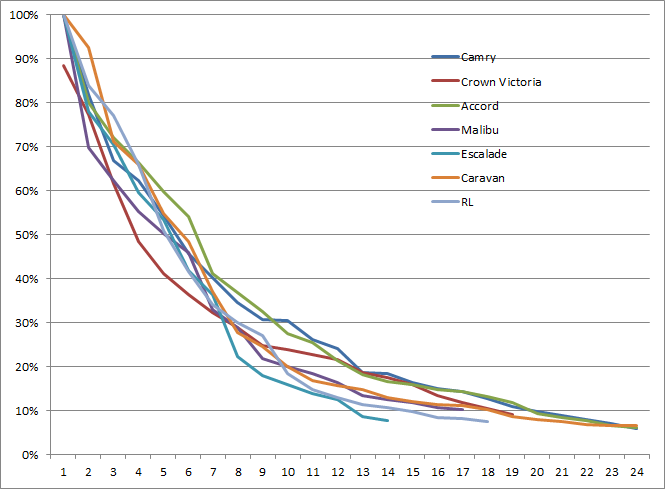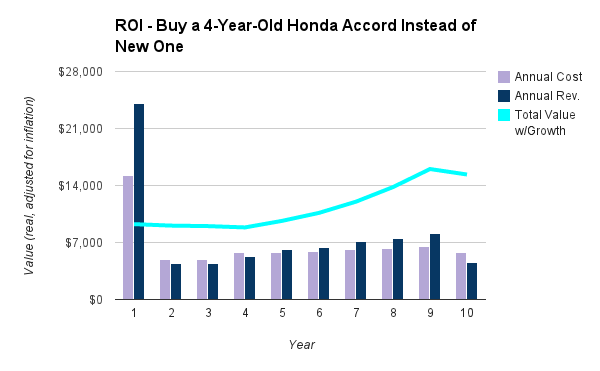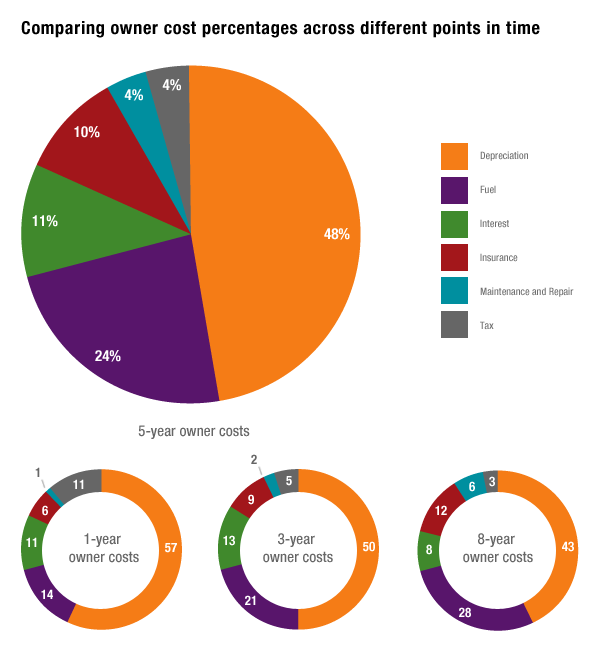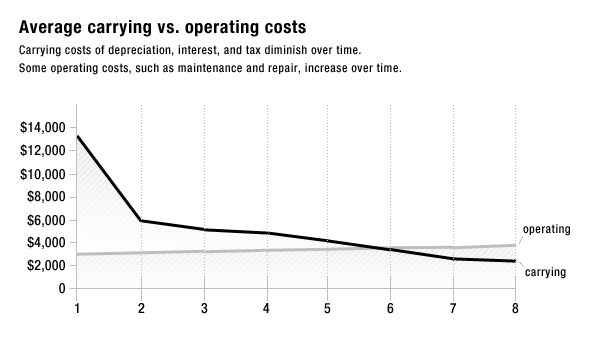Intro
This is the third and final post on buying a car. The first post showed that buying a mid-size sedan instead of an SUV can save $25,000 over 10 years. The next post showed that buying an economy car saves nearly $50,000 per decade versus buying an entry-level luxury car. And now this post is going to show that buying a 4-year-old used car can save $15,000 per decade versus buying a new one.

The trade-offs with buying used are a) it isn’t as sexy – no new car smell or shiny new technology, and b) the maintenance costs are higher for older cars. For this example, I compared a used 2010 Honda Accord to a new 2014 Honda Accord. The reason I chose a four-year-old car is that four years is long enough that the vehicle has had adequate time to depreciate but young-enough not to just be a headache of repairs.
Cars lose most of their value early on in the first few years. Consumer Reports puts it nicely:
A major disadvantage of buying a new car is its rapid depreciation. Models typically lose about 47 percent of their value in the first three years, compared with 24 percent over the next three. But this varies greatly among models.
Jim over at Free By 50 has a good illustration using data from Edmonds.com, where the horizontal axis is car age and the vertical axis is the residual (resale) value as a % of the original value.
CAR DEPRECIATION OVER TIME AS A PCT. OF ORIGINAL VALUE

Confirming what Consumer Reports said, the depreciation curve is steepest in the early years. So that’s why I’m sticking with a 4-year-old car in this example.
The Numbers
I too got my cost data from Edmunds.com. They account for all ownership and operating costs, including insurance, taxes, fees, maintenance, repair, purchase price, fuel, etc. I simply trended the costs out to 10 years. It should be noted again that I didn’t include any financing costs, nor did I include any taxes (I used Oregon numbers, where there is no sales tax). Comparing the two scenarios, and assuming a sale at year 10 to capture depreciation, yields the following for going with the four-year-old used Honda Accord (and investing the theoretical savings):
- 10-Year NPV: $15,350
- 10-Year ROI: 23%
- 10-Year Payback: 0.6 years

Conclusion
No Earth-shattering surprises here. Buying used, while not as sexy or fun, does save an average of $1,500 per year. And again, for good measure, as a reminder of the supremely expensive choice to own a car, I’ll point out that even with the cheaper used car, total ownership costs approach $70,000 after 10 years. How many years of work would it take for a household to save $70,000? Probably over 15 or 20 years for the “average” family these days.
So go ahead and marinate on that for a minute, and in the meantime, don’t go buying any new cars, but if you must, keep ’em small and not too fancy (just don’t go chasing waterfalls).
Update
Found these two great charts over at Consumer Reports that dive a little bit deeper into the ownership costs.
This first one shows that depreciation is by far the largest expense for car owners, followed by fuel. Together, these expenses account for around 70% of the total ownership cost over 8 years.

And this second graph shows just how dramatically depreciation costs drop early on in a vehicle’s life. Eventually, the carrying costs (depreciation, tax, and interest if financing) are eclipsed by operating expenses, but not until year 6, and they don’t eclipse early carrying costs nearly aggressively enough to reverse the potential savings of buying a gently used car.

